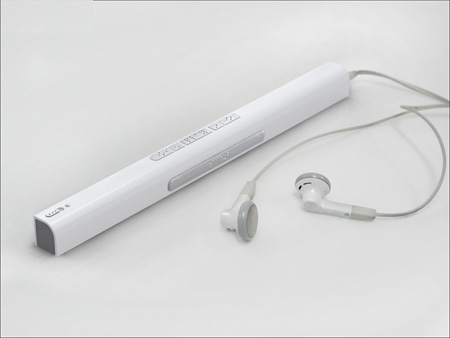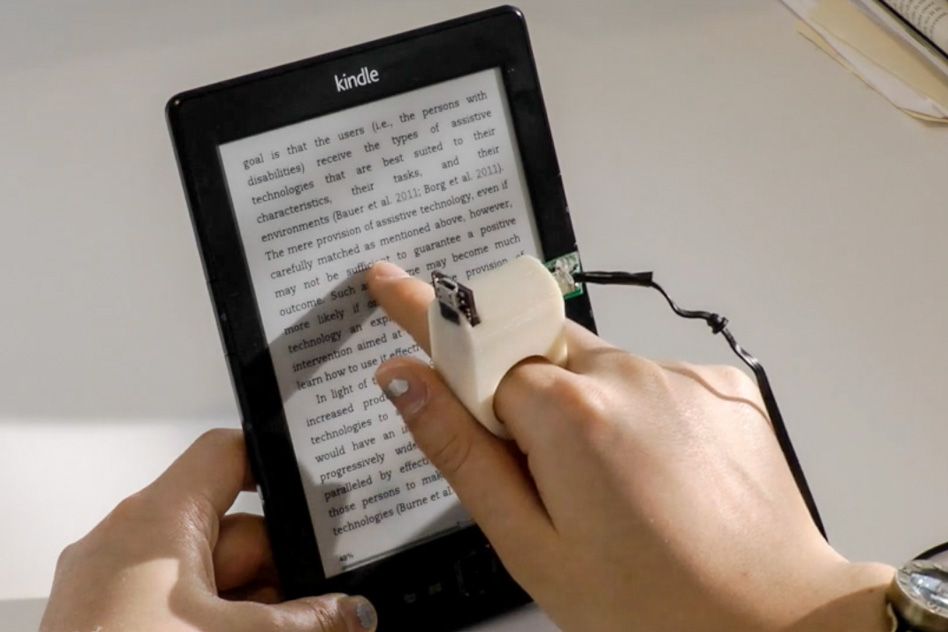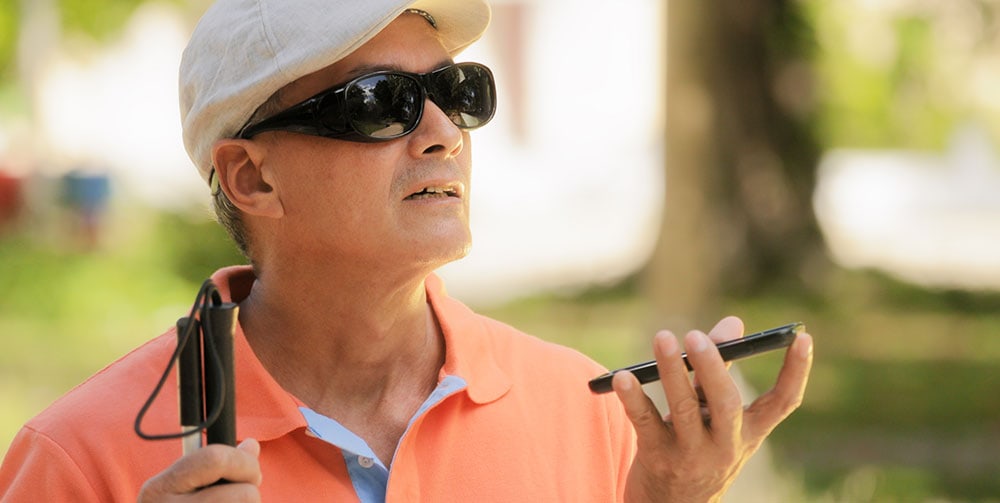Assistive Technology for the Blind: Innovations to Transform Lives
Assistive Technology for the Blind: Innovations to Transform Lives
Blog Article
Discover Ingenious Devices Made for the Visually Impaired
The growth of innovative tools for the aesthetically damaged stands for a significant improvement in access and freedom. Technologies such as smart glasses with AI abilities and mobile applications created to supply auditory summaries are improving daily experiences for individuals.
Smart Glasses for Navigation

Smart glasses made for navigation are reinventing the way aesthetically impaired people communicate with their setting. These sophisticated gadgets make use of a mix of electronic camera technology, expert system, and auditory feedback to provide real-time information concerning surroundings. By using challenge discovery systems, smart glasses can alert individuals to potential threats, enabling safer flexibility in both strange and acquainted settings.
The integration of GPS modern technology even more improves navigation capacities, permitting individuals to obtain acoustic directions as they relocate. This hands-free approach not just cultivates independence however additionally equips visually damaged people to browse city landscapes with boosted self-confidence. Furthermore, several smart glasses are equipped with functions that identify sites and street indications, offering contextual info that improves the user experience.
In addition, the development of these tools is constantly advancing, with firms functioning to boost the accuracy of things recognition and increase the variety of navigational attributes. As clever glasses come to be extra affordable and obtainable, they hold the possible to significantly change everyday life for visually damaged customers. Eventually, these ingenious devices stand for a critical action toward inclusivity, offering improved flexibility and a better sense of autonomy for people navigating the globe around them.

Mobile Apps for Daily Living
How can mobile applications improve the day-to-days live of aesthetically impaired people? Mobile applications are revolutionizing the means aesthetically impaired individuals navigate their settings, manage daily tasks, and access details. These applications supply important assistance with various functionalities, fostering independence and boosting lifestyle.
Several innovative mobile apps are made particularly for daily living. Applications like Be My Eyes link aesthetically damaged individuals with sighted volunteers by means of video calls, permitting them to obtain real-time help with jobs such as reading labels or browsing unknown areas. Seeing AI, developed by Microsoft, uses man-made intelligence to describe environments, checked out text, and identify things, effectively transforming a smartphone into a powerful tool for everyday support.
Additionally, navigating apps tailored for the visually impaired, such as Aira and BlindSquare, supply audio-based instructions and environmental information, allowing users to traverse their surroundings safely and with confidence. Past navigating and immediate assistance, mobile apps also support organization and job monitoring, with features that help users establish reminders, develop order of business, and track consultations. In summary, mobile applications function as essential resources, empowering aesthetically damaged individuals to lead even more independent and satisfying lives.
Wearable Technologies for Assistance
Empowerment through technology is increasingly obvious in the world of wearable devices developed to help aesthetically impaired individuals. These ingenious devices integrate perfectly into life, enhancing navigating and providing crucial comments to customers. For instance, clever glasses informative post equipped with video cameras can recognize faces and read text aloud, enabling customers to connect even more confidently in social and expert settings.
Another significant development is using haptic comments systems in wearable gadgets. These systems utilize vibrations or other responsive signals to convey information regarding the user's setting, such as obstacles or adjustments in surface, improving wheelchair and safety and security. Wearable modern technologies also include wristbands that attach to smartphones, signaling customers to alerts with subtle resonances, thus enhancing connectivity without reliance on aesthetic hints.
As these modern technologies proceed to evolve, they are not just improving independence for aesthetically damaged individuals however likewise cultivating a greater sense of incorporation in society. By linking the void in between difficulties encountered in news day-to-day living and the possibility for autonomy, wearable technologies act as crucial tools in the quest for equal rights and empowerment for those with visual impairments.
Audio Description Tools
Audio description tools play a crucial duty in boosting accessibility for aesthetically damaged individuals, supplying them with the ability to involve with visual media. Assistive technology for the blind. These tools supply narrated summaries of key aesthetic aspects in movies, television shows, and live performances, ensuring that users can totally understand the context and feelings shared via visuals
Audio description can be incorporated into various systems, consisting of streaming services, movie theater testings, and live movie theater. Many preferred streaming services currently include audio summary as an ease of access attribute, allowing viewers to select it conveniently. In addition to mainstream media, specialized applications also exist, giving audio summaries for art exhibits, galleries, and other cultural events.
The efficiency of audio summary rests on the ability of the storytellers, that should share aesthetic information succinctly without interfering with the original sound. Advancements in this field are additionally leading the way for even more individualized experiences, where individuals can adjust the level of information and pacing according to their choices.
Braille Innovations and Instruments
Braille gadgets and advancements have actually significantly changed the means aesthetically impaired individuals connect with message and details. Modern advancements have led to the development of flexible tools that boost proficiency and self-reliance amongst users.
Furthermore, portable Braille notetakers combine conventional Braille input with contemporary functionalities, assisting in note-taking, organizing, and file editing on the go. Speech-to-text devices for low vision. These small tools usually feature text-to-speech capabilities, connecting the gap between Braille and acoustic info
Additionally, cutting-edge Braille printers have actually arised, enabling individuals to create Braille tags, documents, and academic materials effectively. This ease of access fosters better involvement in professional and academic environments, inevitably advertising inclusivity.
Additionally, research study into wise Braille technologies proceeds to pop over here increase. Gadgets that include man-made intelligence are being explored to supply real-time navigating assistance and contextual details, boosting the user experience in varied setups. On the whole, these innovations show a commitment to encouraging aesthetically impaired individuals with innovation, guaranteeing they can quickly gain access to and involve with the world around them.

Final Thought
The development of innovative tools for the visually damaged considerably boosts independence and top quality of life. These modern technologies not only foster greater inclusion yet likewise advertise autonomy in daily activities, inevitably contributing to an extra available and fair society for aesthetically impaired individuals.
As smart glasses end up being extra obtainable and budget friendly, they hold the potential to dramatically change day-to-day life for aesthetically damaged customers. Mobile applications are transforming the way visually damaged customers browse their settings, handle daily jobs, and gain access to details. Apps like Be My Eyes attach aesthetically damaged customers with sighted volunteers through video clip calls, permitting them to receive real-time support with jobs such as reading labels or navigating strange rooms.Furthermore, navigating applications customized for the aesthetically impaired, such as Aira and BlindSquare, use audio-based instructions and ecological information, allowing customers to traverse their environments safely and with confidence.The development of innovative tools for the visually impaired dramatically improves independence and quality of life.
Report this page